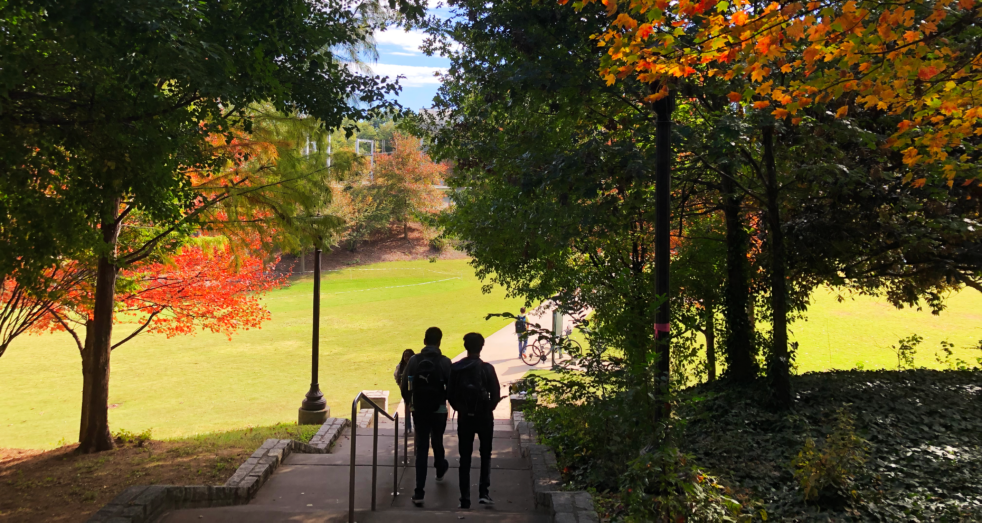As students begin to return to campus, many issues have become increasingly apparent, specifically campus accessibility. Even in light of legislation such as the Americans with Disabilities Act (ADA), many disabled students have expressed that getting around campus still remains a continuous struggle.
Tech may be ADA compliant, but they are in no way readily accessible. Although newer buildings have worked towards creating a more accessible environment, several outdoor environments and older buildings still remain unavailable for many students. Furthermore, Atlanta’s elevation is one of the biggest problems in creating accessible architecture on campus. Features on campus such as Freshman Hill that may seem like a minor inconvenience for able-bodied students are often an insurmountable obstacle for people with disabilities.
For many students with disabilities, the only way to get around campus is by going in and out of buildings constantly, so they can utilize elevators and indoor ramps. However, many doors on campus lock at night and even those that are available by Buzzcard access are not usually the ADA doors, which further complicates the issue. This forces students to either limit their hours on campus or wait for assistance, an inherent impediment to the ideas of independence that college champions.
Furthermore, students with academic disabilities often struggle with gaining access to the resources they need to succeed on campus. For example, many students are forced to negotiate their own accommodations instead of receiving support from people who are supposed to advocate for them in these settings. The actual process of being able to even apply for accommodations is often long and arduous — forcing students to go through extensive, expensive testing to get the correct paperwork.
While all of these facets of campus are technically ADA compliant, they, by no means, provide students with the accessibility they need to successfully navigate campus physically, emotionally and academically. This is a testament to a larger issue around the nation. Even though campuses and institutions are compliant, that does not mean they are meeting the needs of people with the disabilities. Often ADA compliance is worn as proof that your institution is truly for everyone — but like many other facets of corporate and public change, it is mostly performative, nothing more than a checkmark.
Being compliant is not enough because the legislation defining compliant is sorely lacking at times. For examples, there is very little in fire codes expanding on escape routes for people with disabilities. In emergencies, buildings like Clough can be deadly for those with physical disabilities since there are few escape routes that do not involve the use of elevators.
Tech, as a proclaimed paragon of innovation, needs to do better to ensure that it is as open and diverse as it claims. Many smaller firms do not have access to the resources necessary to ensure their projects are ADA compliant, especially since it is extremely difficult to find resources on how to create ADA buildings. However, Tech cannot hide behind these excuses as they have access to countless resources.
Clubs on campus like ABLE Alliance, Pride Alliance and SCPC have gone out of their way to make their events more accessible and to raise awareness of the issues that people with disabilities face. Their continued need to advocate for students is reflective of the institute’s resistance to meaningful change. Newer initiatives, like transit vehicles for people with disabilities or spaces on the buses for people with disabilities, are often difficult to use on a daily basis.
Changes to the definition of accessibility need to extend past institutional change. There must be legislative standards — holding all institutions to a higher standard.
People with disabilities deserve more than the bare minimum. They deserve more than being forced to take unnecessarily complicated pathways and being limited to only one route between places.
Freedoms like choosing which route you can take or being able to get to class easily are privileges that abled people take for granted, and we need to push our government and our campus to do better by their students — all their students.
